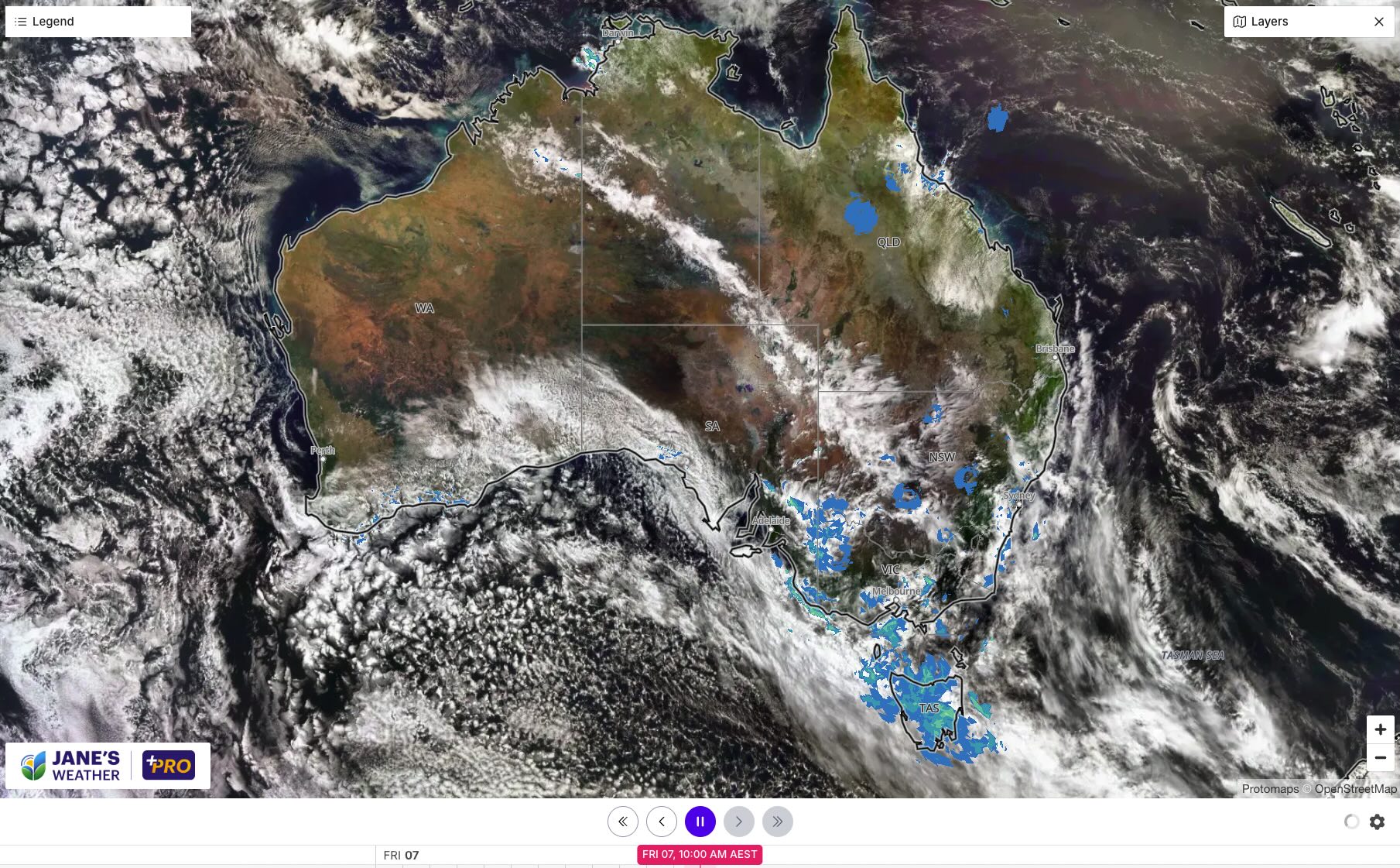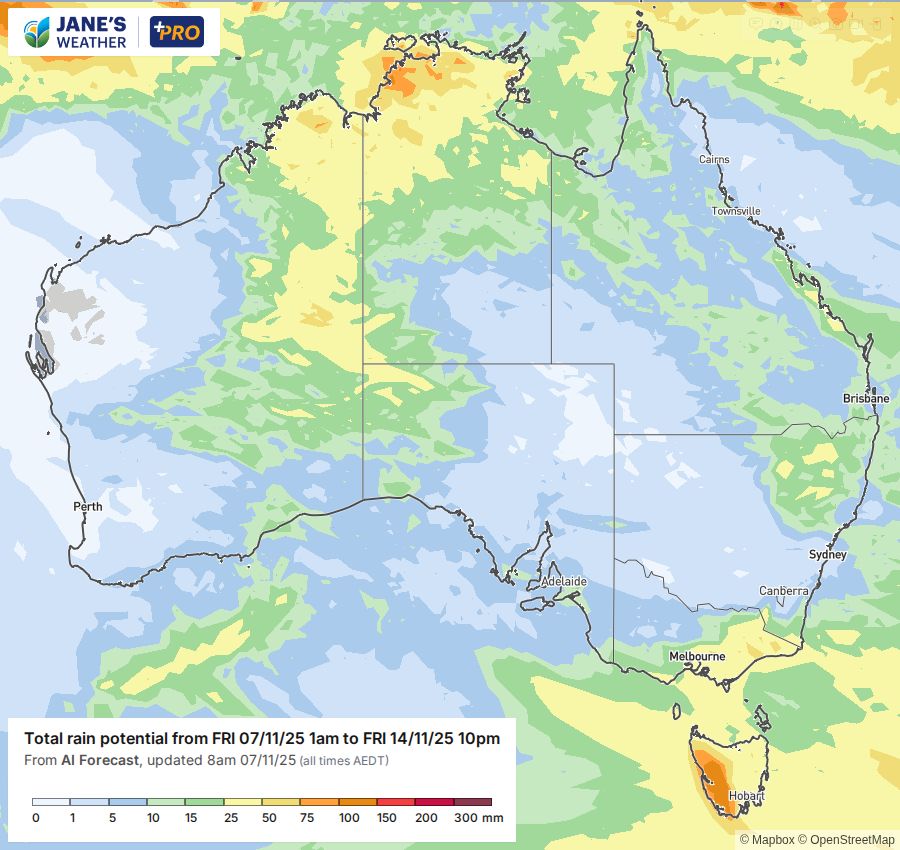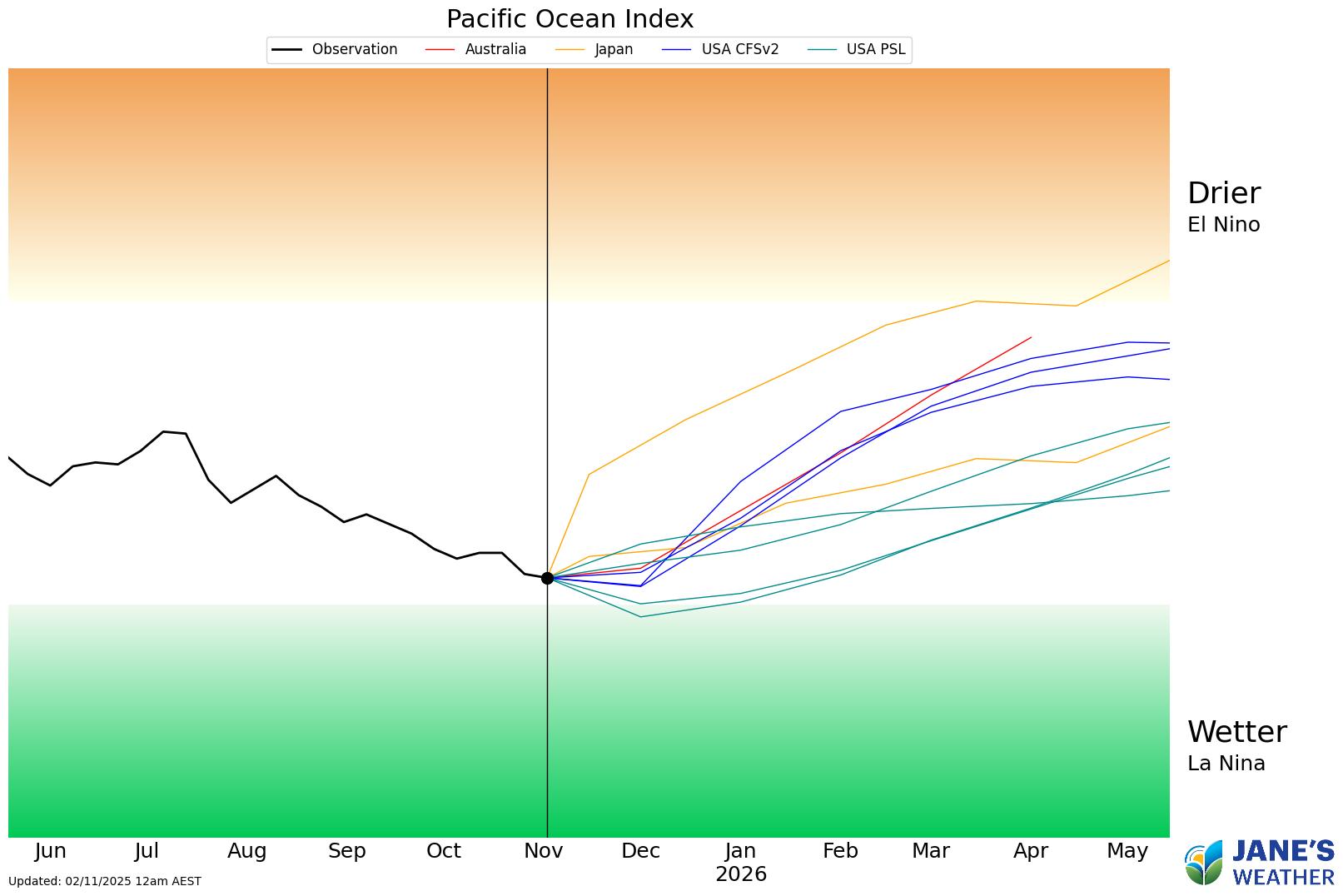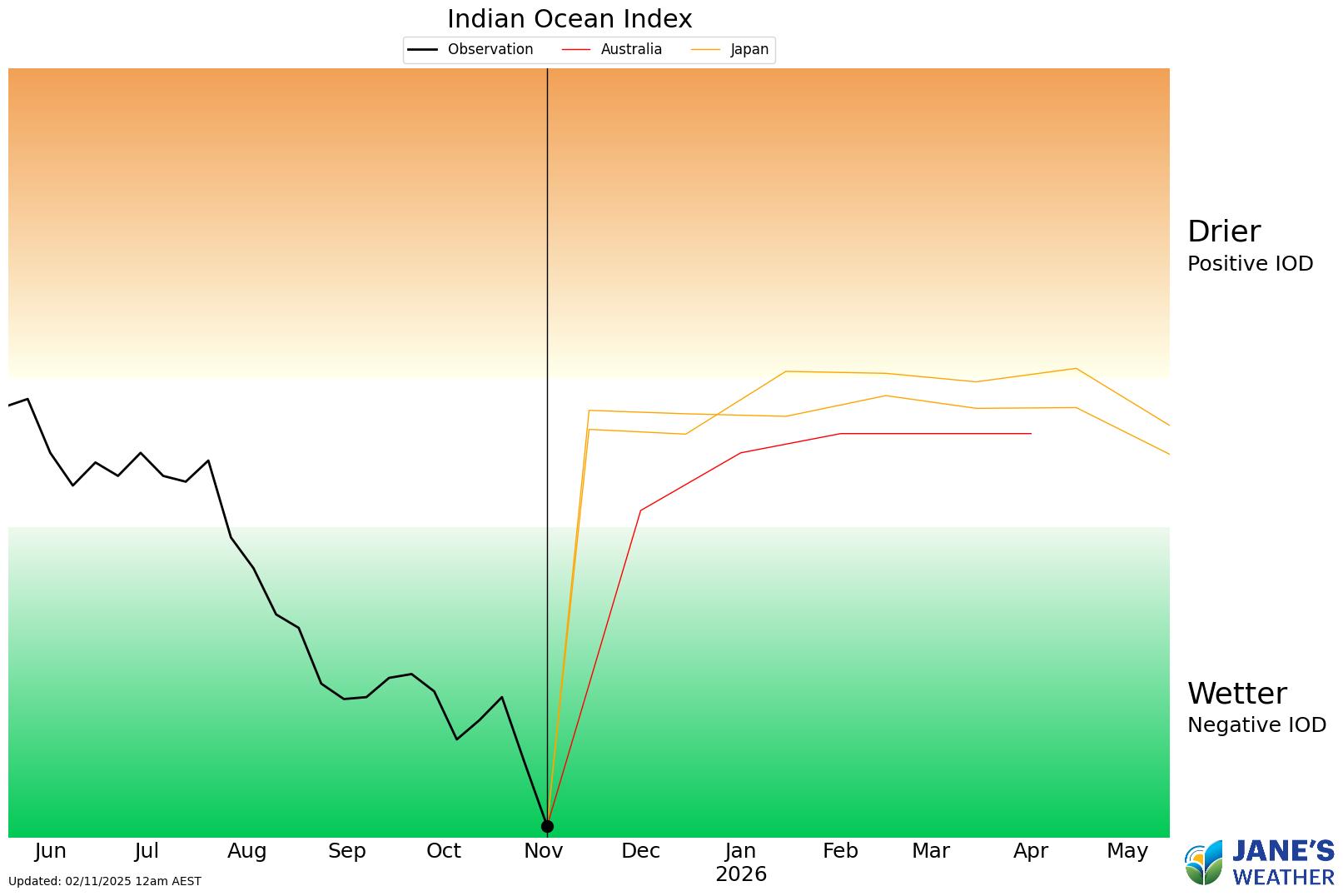As we kick off the weekend we have a low crossing the southeast, with a big cold front and trough set to move through the eastern states.
The low ensures Tasmania and southern Victoria have significant rain (and the cold air that goes with it - plus gusty winds if you are near the low). The trough brings showers and thunderstorms out ahead of it, slowly contracting northeastwards.
This all packs a bit of a punch, in different ways:
Thanks to the path of the low, Melbourne will be in the low teens all through Saturday in steady rain (on a day that wouldn't be out of place in mid-winter). It may only reach 13C.
Sydney is going on a temperature rollercoaster - in the low 30s on Saturday, then the high teens on Sunday.
Some of the storms with the trough will be severe, with damaging winds, large hail and heavy rain leading to flash flooding (if you are directly underneath the storm at its peak).

As we head into next week things turn fairly quiet in Queensland and NSW. The southeast has two cold outbreaks - one on Monday/Tuesday, followed by another on Thursday. While these bring low level snow to Tasmania, and snow for the alps in Victoria, once they have passed they leave us with clear skies, light winds and lingering cold air - the perfect recipe for late season frost. There may be two of these (thanks to two cold outbreaks) - so be prepared if you are inland in the southeast.
Meanwhile, the next big system kicks off in the west.
The rain won't reach the southwest. Instead its all about the heat, before a dry cool change arrives mid-week. The wet weather is further north and east, mainly over the interior. At this stage the modelling isn't quite in consensus yet about where this will move at the end of the week (as you wouldn't expect it to be a full week away), so it is one to watch to see which parts of the east get the next significant rain (from next weekend onwards).

Looking at our climate drivers, shows that the Pacific Ocean is nearing closer and closer to the Australian threshold for La Nina (the green area in the graphic). The USA has a weaker threshold and we have already crossed that, with La Nina declared by them several weeks ago.
This ensures we have plenty of moisture being pushed towards Australia from the Pacific Ocean. It doesn't guarantee rain - you need low pressure to do that - and it all depends on which areas have low pressure visit them the most, as to who gets the above average rain.

In the Indian Ocean we have been in a Negative Indian Ocean Dipole (Negative IOD) since late July. This ensures plenty of moisture is pushed towards Australia from the Indian Ocean (the 'La Nina' of the west if you will).
We keep seeing this in action with each significant rain system that passes through - but we also see how the rain is only for those in the path of low pressure, while the rest miss out.

Unfortunately there is no video update this week.
In this series I'll take you through the drivers of our weather, highlighting any changes over time and things to watch out for (generally every Friday). It covers weather elements like temperature and rainfall, and how they are driven by moisture from the Pacific and Indian Oceans, as well as bursts of energy from low pressure (SAM and MJO).
See and hear my commentary as I take you through the weather pattern's effects on our rain and temperatures in detail over the next week, with a brief look at week 2 and beyond as well.
Plus what is driving our weather in the weeks and months ahead, with the latest on El Nino/La Nina, the Indian Ocean Dipole (IOD), the Southern Annular Mode (SAM controls our weather systems), and the Madden Julian Oscillation (MJO connects tropical moisture to our weather systems).
I update this commentary each week, generally on Friday's. Make sure you are signed up (free or a subscription) so you don't miss an update.
Stay up to date with the forecast specifically for your area in our hour by hour outlook for the next 10 days. Download our app for iPhone and Android.
As always, you can see each of these graphics as soon as they update, as well as more information about them under our Rain Outlook and Seasonal Outlook pages within Jane's Update, along with our Snow Forecast in the snow season.

For further insights specifically for agriculture, to improve the utilisation of your resources, tailored to any Australian location, please upgrade your membership. You can take advantage of our free 30 day trial.
Upgrade to see full insights to help plan the best use for your resources:
- frost risk
- spraying conditions
- evapotranspiration to efficiently manage available water for crops
- growing degree days to monitor growth
- full ten day hour by hour outlooks, all variables, and all model data
- customised alert notifications
.png)
.png)
.png)
.png)